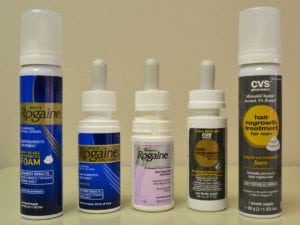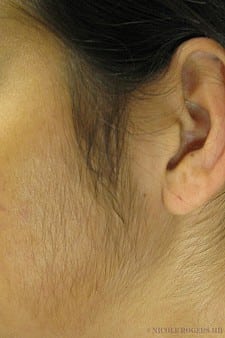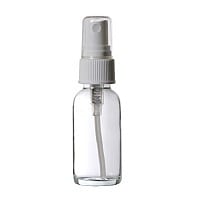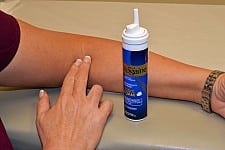 Topical Minoxidil
Topical Minoxidil
Minoxidil was the first FDA approved medication for treating hereditary hair loss. Originally used as an oral medication for treating hypertension, patients on minoxidil frequently complained of excessive hair growth on the scalp and face. Topical minoxidil was approved by the FDA in 1988 after studies showed it was effective for treating male pattern hair loss. Since that time both females and males suffering from inherited hair loss have used minoxidil with great success.
Minoxidil for Men:
Presently, minoxidil is FDA-approved for men in a Rogaine® 5% solution and foam. The solution is applied with a dropper but can be messy and difficult to apply. Many prefer the less greasy foam formulation. Patients who are highly motivated can apply the product twice daily. It is preferred to use on a dry scalp (so the product is not diluted) but some men prefer to apply it to towel-dried hair after showering. The key is to find a routine that works for you and stick with it! Consistent use for a minimum of 6-12 months is necessary in order to see results.
Minoxidil for Women:
5% minoxidil foam is now FDA approved for once-daily treatment of hair loss in women. This occurred after one study published in the Journal of the American Academy of Dermatology showed that the 5% minoxidil formulation applied once daily is just as effective in women as the 2% applied twice daily. Women who don't wash their hair often may prefer to apply the 5% solution once daily with a dropper. That way they can wash and style their hair normally in the morning. It is not essential to wash the hair daily, but a slight residue may build up on the scalp after a few days’ use.
Are there any women who should NOT use the 5% Rogaine? Yes. There are two groups who should be cautious with the 5% formulation:
 1) Women with unwanted facial hair. If you already have unwanted facial hair, there is a chance that it may become thicker or darker with use of 5% minoxidil. This is not from the medication running down the face but rather from the systemic absorption of the minoxidil. A safe approach would be to start with the 2% once daily at night. Alternatively, you may start with the 5% and consider various hair removal treatment strategies, such as Vaniqa® cream, laser hair removal, depilatories, or electrolysis if you do get additional unwanted facial hair.
1) Women with unwanted facial hair. If you already have unwanted facial hair, there is a chance that it may become thicker or darker with use of 5% minoxidil. This is not from the medication running down the face but rather from the systemic absorption of the minoxidil. A safe approach would be to start with the 2% once daily at night. Alternatively, you may start with the 5% and consider various hair removal treatment strategies, such as Vaniqa® cream, laser hair removal, depilatories, or electrolysis if you do get additional unwanted facial hair.
FAQ about minoxidil:
“Isn’t it true that you have to use it forever or all your hair will fall out?”
“Can I use this on the front of my scalp?”
 "I don't like the dropper that comes with the solution. What can I use instead?"
"I don't like the dropper that comes with the solution. What can I use instead?"
“Can I use the generic of Rogaine?”

“Should Rogaine make my scalp itch?”
1. Discontinue minoxidil and consult your physician. You may be prescribed topical or oral steroids to help relieve symptoms.
“What are these minoxidil substitutes? Do they really work?”
There are a number of products with similarity to minoxidil claiming better tolerability and in some cases even better absorption. They go by the trade names kopexil (trade name Aminexil) or nonoxidil. Kopexil is not approved for use in the United States and there is no data showing its efficacy in treating hair loss. There is also no data demonstrating the efficacy of nanoxidil in treating hair loss. While reports claim that these products are 'better tolerated' the culprit for itchy scalp is usually propylene glycol (a preservative used in many hair care products) not the minoxidil itself.
